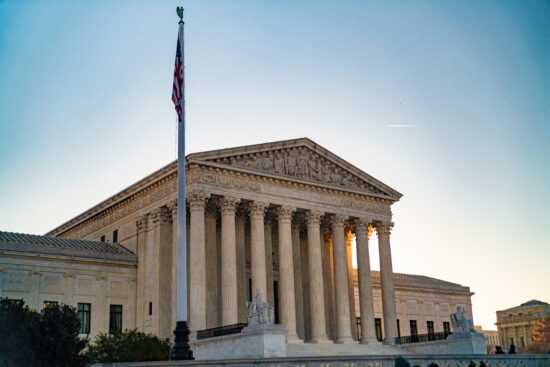Today, parents of America’s 60 million children will begin receiving a second payment as part of the enhanced federal Child Tax Credit. The checks normally arrive on the 15th of each month, but the IRS is sending the money earlier because August 15 falls on a Sunday this year. As individuals begin receiving these payments, Christians may wonder what the program entails and what it means for families who receive the credit.
According to a new Household Pulse Survey (HPS) produced by the Census Bureau, the tax credits resulted in a reduction in the number of households with children that reported food insufficiency and trouble paying household expenses. Even though adults in households with children are more likely to experience food insufficiency, says the Census Bureau, those households saw a 3 percentage point decline between the surveys conducted before and after the Child Tax Credit payments.
Here’s what you should know about this benefit for families.
What is the Child Tax Credit?
The Child Tax Credit is a provision that was included in the American Rescue Plan Act of 2021, legislation that provided economic relief because of the pandemic.
The American Rescue Plan increased the Child Tax Credit from $2,000 per child to $3,000 per child for children over the age of 6 and from $2,000 to $3,600 for children under the age of 6. It also expands the ages of eligible children, which was previously capped at age 16.
The credit is being issued in the form of a monthly payment of up to $300 per child. The first payment began in July. The IRS sends the payments by direct deposit to the bank account they have on file. (Deposits for the Child Tax Credit are labeled as CHILDCTC in a family’s bank account.) If they don’t have bank account information for a family, a check will be mailed to them.
Who is eligible for the tax credit?
Nearly all families with children qualify for the credit, though some income limitations apply. The child tax credit begins to phase out for heads of household making more than $112,500 annually or couples earning more than $150,000 a year. (This calculator will estimate the amount you’ll receive.)
What about families who didn’t earn enough to receive the credit?
Parents and caregivers that didn’t earn enough income to be required to file taxes in 2020 or 2019 can still get benefits. To benefit low-income families, the credit has been made tax refundable, which means that families that do not have an income will also receive the money.
Previously, low-income families did not get the same amount or any of the Child Tax Credit. Under the American Rescue Plan, all families in need will get the full amount.
Will low-income families that receive the Child Tax Credit still be eligible for other government benefits, such as SNAP, TANF, or WIC?
Yes, since the Child Tax Credit payments are not considered income, it does not change the amount of federal benefits received by a family. Such federal benefits include unemployment insurance, Medicaid, SNAP, SSI, SSDI, TANF, WIC, Section 8, or Public Housing.
What do families need to do to receive the money?
For families that filed taxes this year (i.e., filed a tax return for 2020), filed last year (i.e., filed a tax return for 2019), or that signed up for Economic Impact Payments ( “stimulus checks”) using the IRS’s Non-Filer tool last year, the monthly payment will be automatically sent to them by the IRS.
Families who do not meet the above criteria can still sign up at the Child Tax Credit for Non-Filers website.
Will the credit be given next year?
The American Rescue Plan authorized the Child Tax Credit only for 2021. However, President Biden has proposed in his American Families Plan to extend the credit through 2025 and make it permanently fully refundable.
How to help Christians think about this
Christians may disagree about the concept of direct payments from the government. Still, it should be noted that the goal is to decrease child poverty. As the study above notes, the payments did have some bearing on the number of households with children reporting as food insufficient or having trouble paying for their daily needs. This fact points to the way that economic concerns, especially in light of the pandemic and the many who lost jobs or were furloughed, continue to linger for individuals.
Also, as we recently highlighted, the fact that over 70% of those seeking abortions do so for economic reasons, including a fear that they will be unable to support an additional child, addressing abortion through poverty measures is one way to advance the pro-life agenda of caring for the most vulnerable, both inside and outside the womb.
As such, pro-life Christians should give careful consideration to the efforts of government officials to address such a pressing concern in the lives of children, though we may sometimes disagree about particular approaches or policies. Just as the tax code — not often a place where Christians think of advancing pro-life policy — confers benefits to marriage because of the recognition of its societal good, the aim of these payments to alleviate child poverty is one way to recognize children as a social good. Even if we would prefer another method or our political preference advocates a different way, a society that begins to have a greater appreciation for children and advances the protection of the vulnerable is clearly something pro-life Christians should appreciate.









